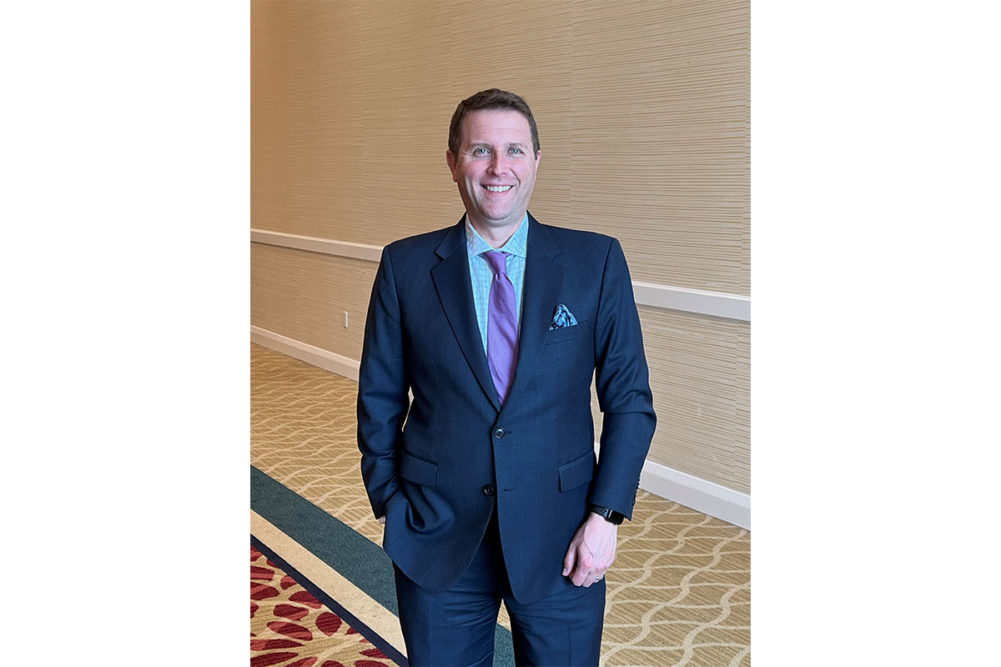ORLANDO, FLA. — In his third year as president and chief executive officer of the National Grain and Feed Association (NGFA), Mike Seyfert remains committed to the organization’s growth and its effectiveness in supporting the advancement and economic performance of American agriculture. Sitting down with a Milling & Baking News editor at the 128th annual NFGA convention, Seyfert shared some successes and reviewed the priorities the association was focusing on in 2024.
One item garnering special attention at this year’s convention was a Dec. 14 agreement between the Biden administration, various environmental and tribal groups, and the states of Washington and Oregon to file a settlement in the US District Court in Oregon to help fund a $1 billion project to conduct studies on “how the transportation, irrigation, and recreation services provided by the four Lower Snake River dams could be replaced, to help inform Congress should it consider authorizing dam breach in the future.”
The NGFA responded to the December filing with a Jan. 30 written statement opposing any actions by federal or state governments that would result in breaching the Lower Snake River dams, effectively shutting down the world’s third-largest export corridor for grains and oilseeds. But Seyfert said the direct exclusion of agricultural perspectives in drafting the federally supported December agreement was the most troubling detail to NGFA members.
“A lot of our members and a lot of those who are shipping on the river really had no voice participation in those meetings earlier in the course of last year,” he said. “And even though (the agreement) doesn’t allow for breaching, we feel like it really is trying to lay the groundwork to make it the only alternative that they come up with, so we’re trying to be as out front and working as much as we can to make sure this doesn’t happen.”
Another piece of legislation that has been riling NGFA members is the recently proposed In-Use Locomotive Regulation by the California Air Resources Board, which will require any locomotive older than 23 years that wants to operate in California to be decommissioned and replaced with a zero-emission (battery-operated) locomotive by 2030.
“From our members’ perspectives, we have a very close relationship with a number of railroads and a number of them are our members,” Seyfert said. “But also, a number of our members have their own engines to pull the cars once they’re off the railroad line and onto their line and that’s an incredibly cost-intensive replacement. And depending on who you talk to, that technology may or may not even exist today, so it feels like it’s a push forward, but it’s really a march forward with a lot of unanswered questions, the least of which is if it is even feasible.”
Seyfert said members were actively engaged in the annual funding of the appropriations bills, especially those that fund the upkeep and restoration of the nation’s lock and dam system. Also, Seyfert shared that the NGFA members were excited about supporting the Innovative Feed Act, which would create a new class of animal feed additives that are currently classified as animal drugs in the United States and must undergo a 10-year regulatory process with the US Food and Drug Administration before they’re allowed in applications. The main issue with the current law, Seyfert said, is these same products are being used in overseas products that are then imported and sold in the United States.
“It is keeping tools out of the hands of US producers, and it’s making our NGFA members and feed manufacturers here in the United States uncompetitive,” Seyfert said.
As for the current decline in US demand for animal feed, Seyfert said he was hopeful but mindful of the surrounding pressures to the market. Since the pandemic, producers have had to endure impacts from drought, supply chain issues, inflated costs and animal disease, resulting in several instances of producers needing to cull herds or flocks or send animals to early slaughter. According to a Jan. 31 report, the US Department of Agriculture indicated US cattle numbers were at their lowest level since 1951.
“What we hear from our members is that they think production of animal feed is going to continue to grow in 2024, but it’s going to be pretty limited and certainly you’re going to see more growth in the developing areas like South America and Asia,” Seyfert said.
Seyfert was composed about the upcoming presidential and congressional elections and its impact on NGFA priorities.
“Our job as an association is to work with both parties and whoever is in power in the administration or in Congress,” he said. “Our team has heard me say many times that at NGFA, we don’t wear red hats and we don’t wear blue hats, we wear NGFA hats, and if you’re going to be successful as a trade association representing your members, that’s how you have to look at it, and you have to be willing and able to have conversations with everybody, otherwise you get pigeonholed and you don’t find solutions, and that’s the last thing you do when you’re working for your members.” MBN






